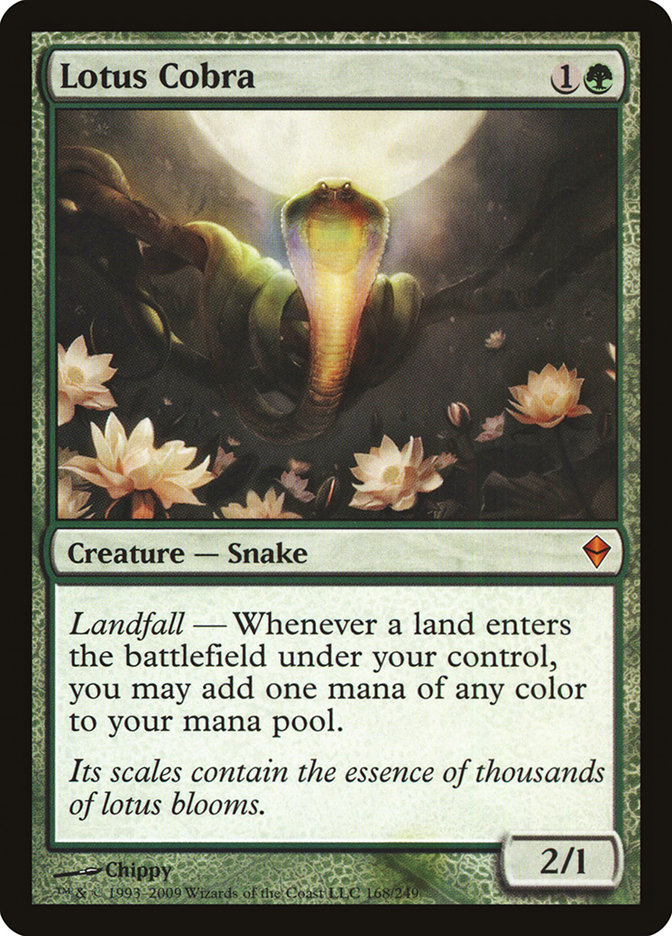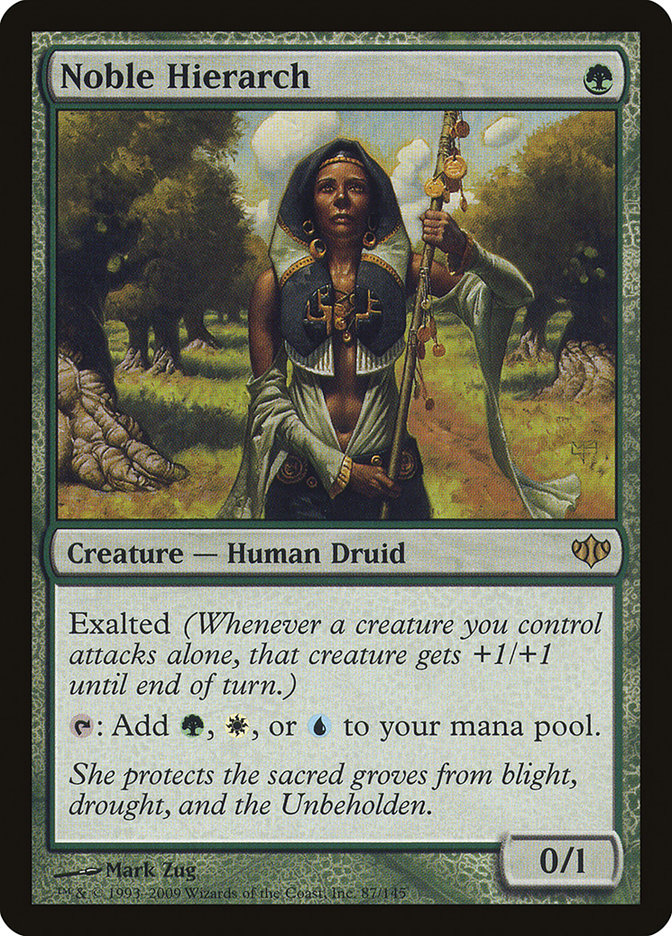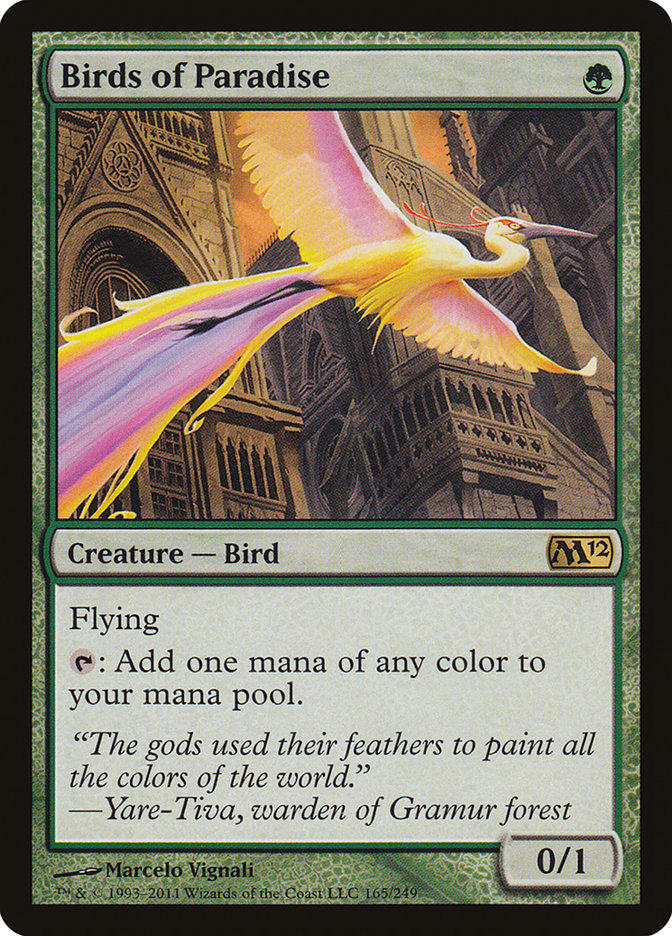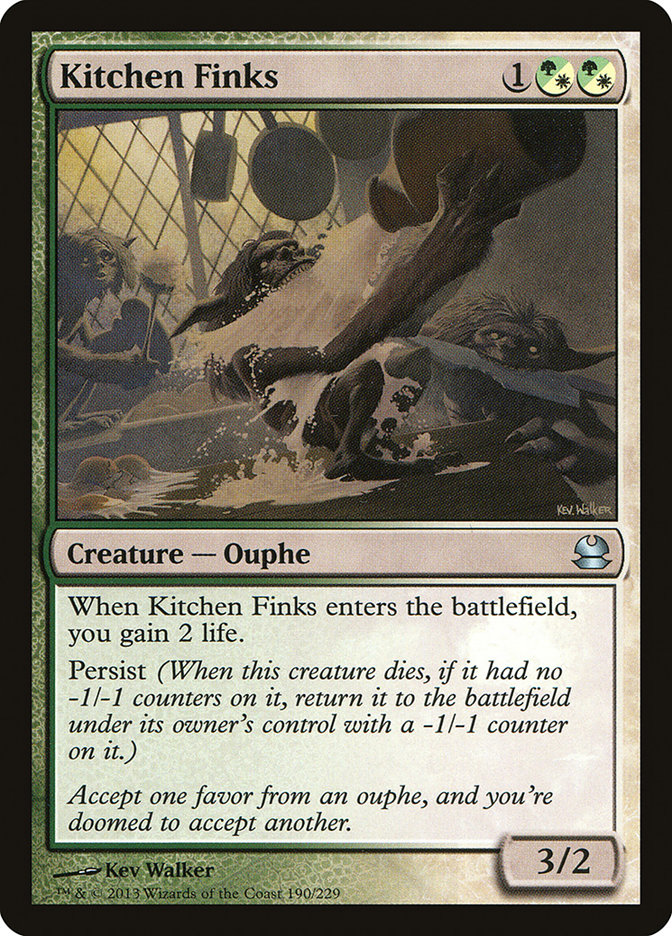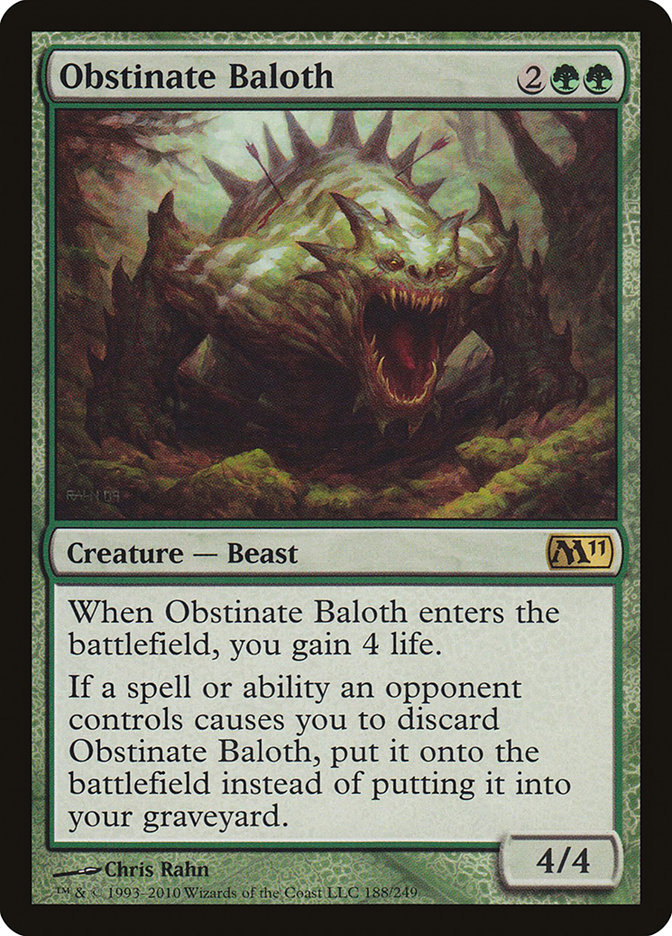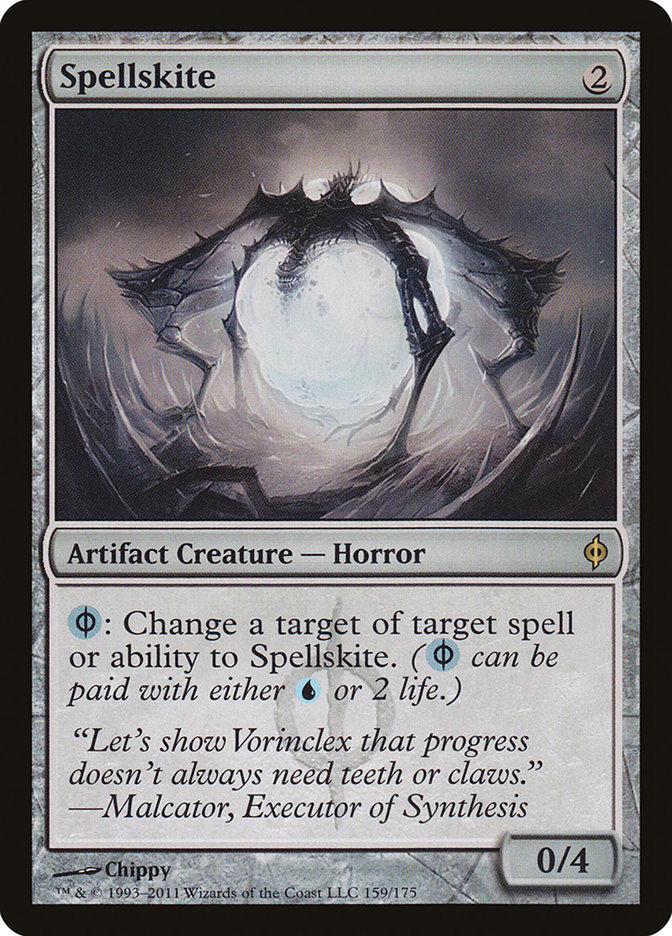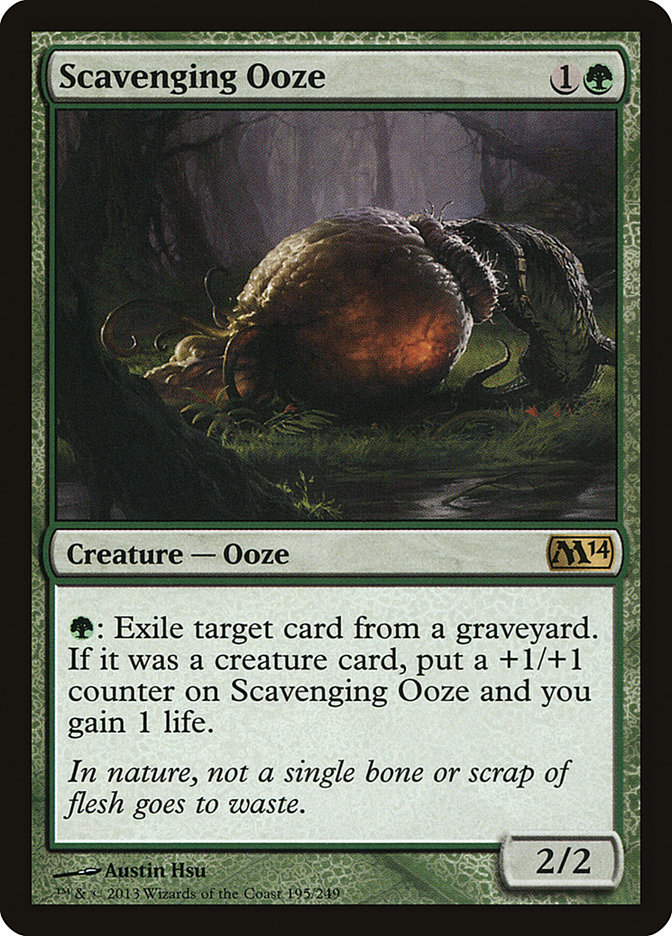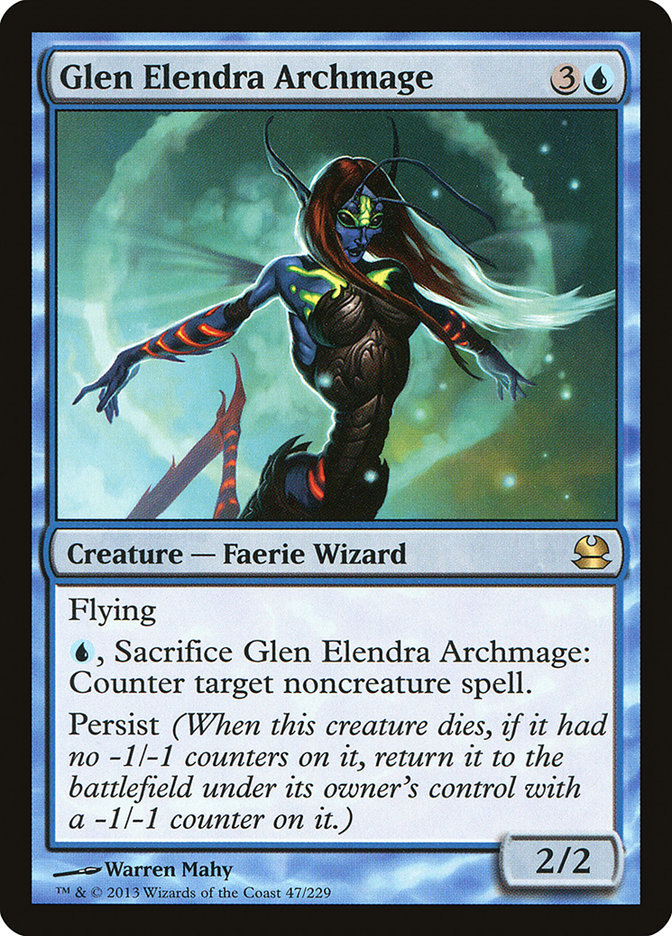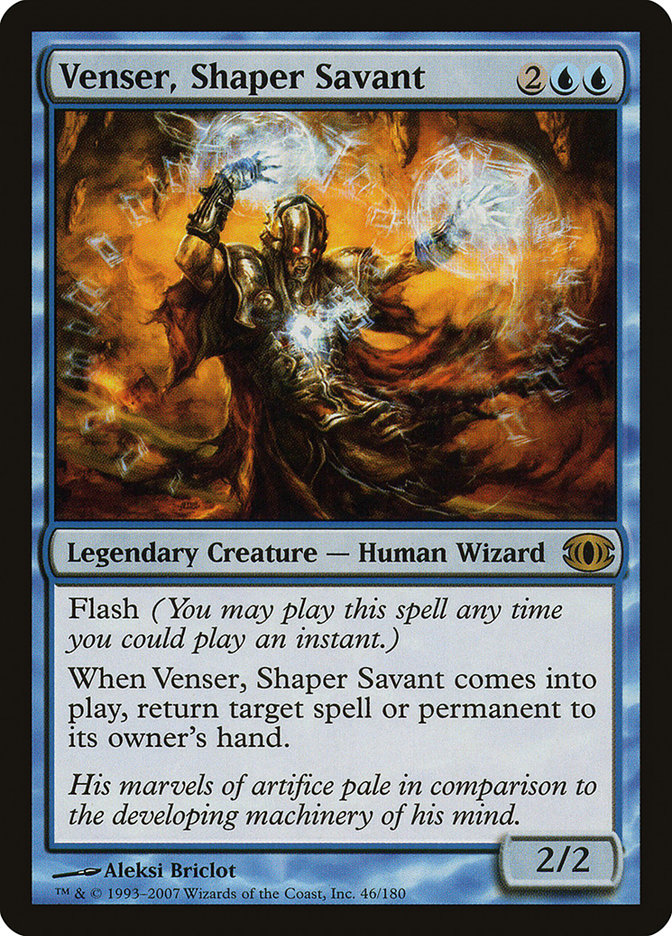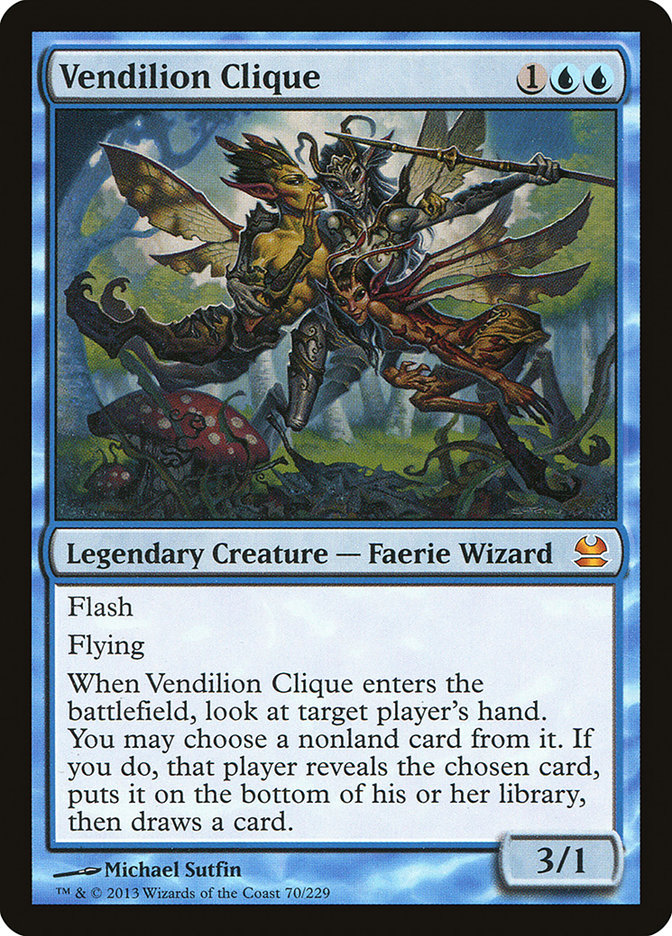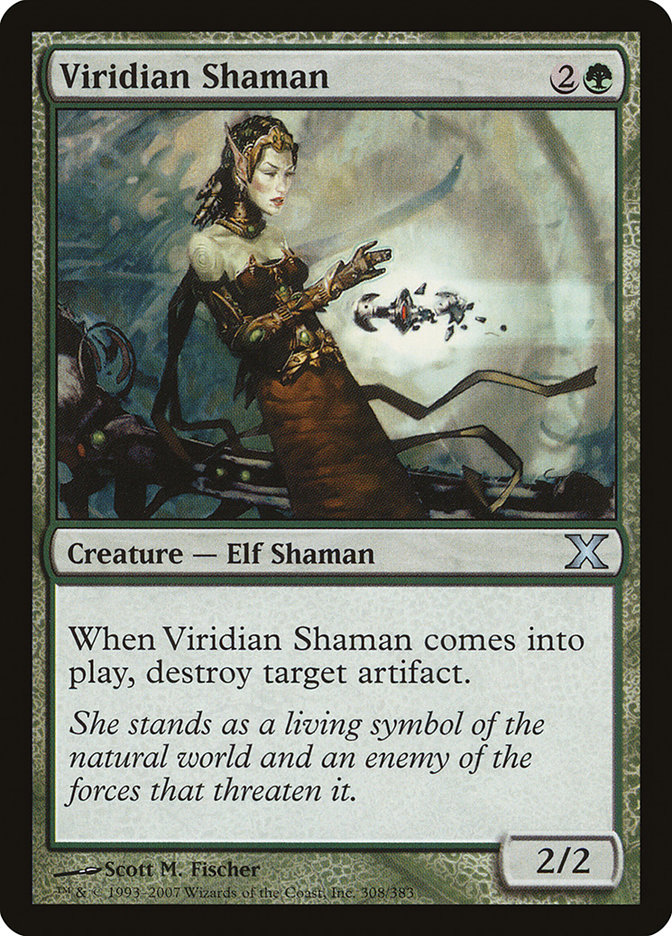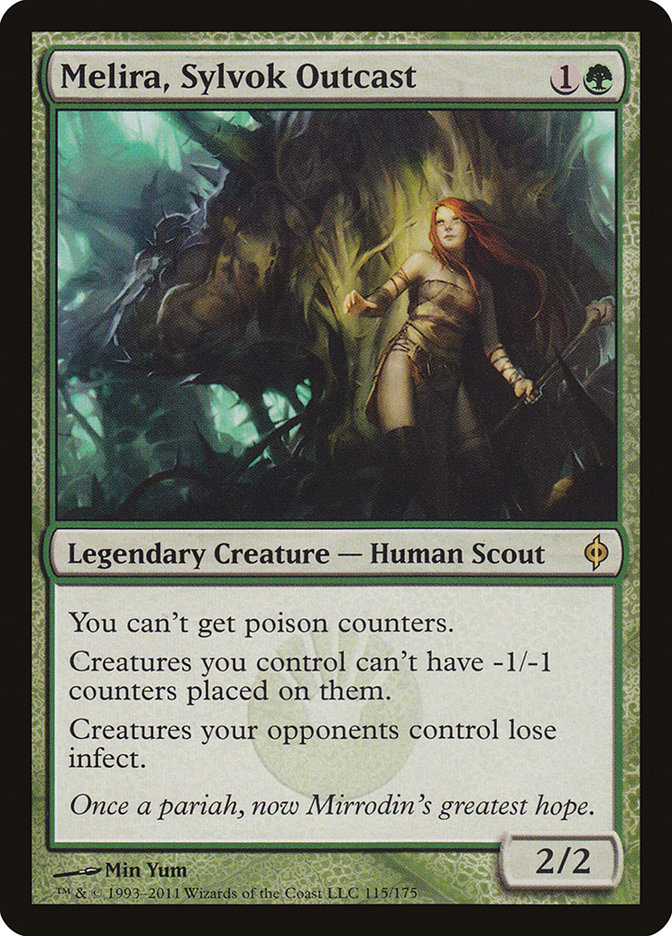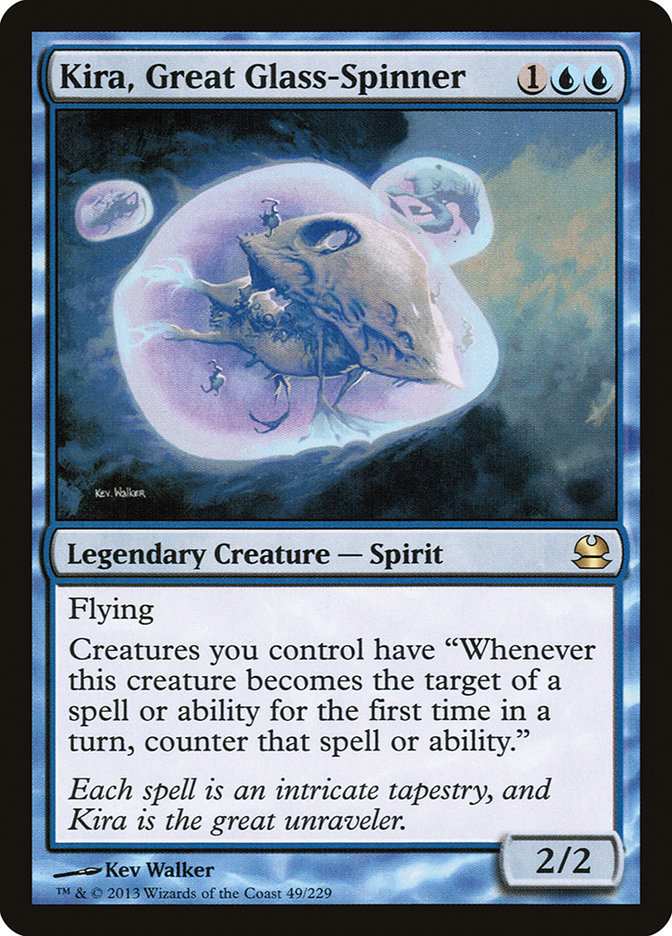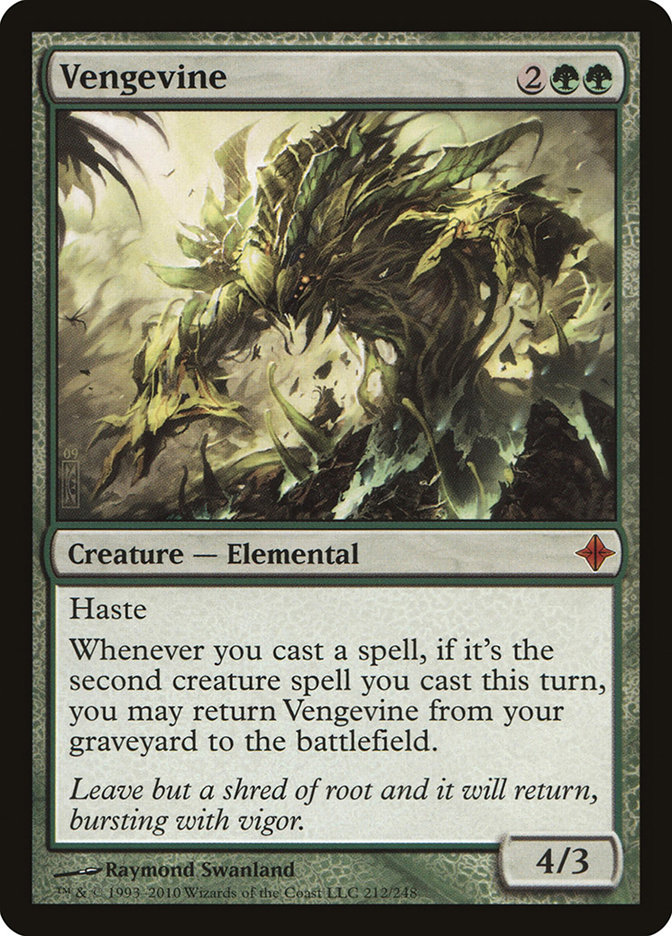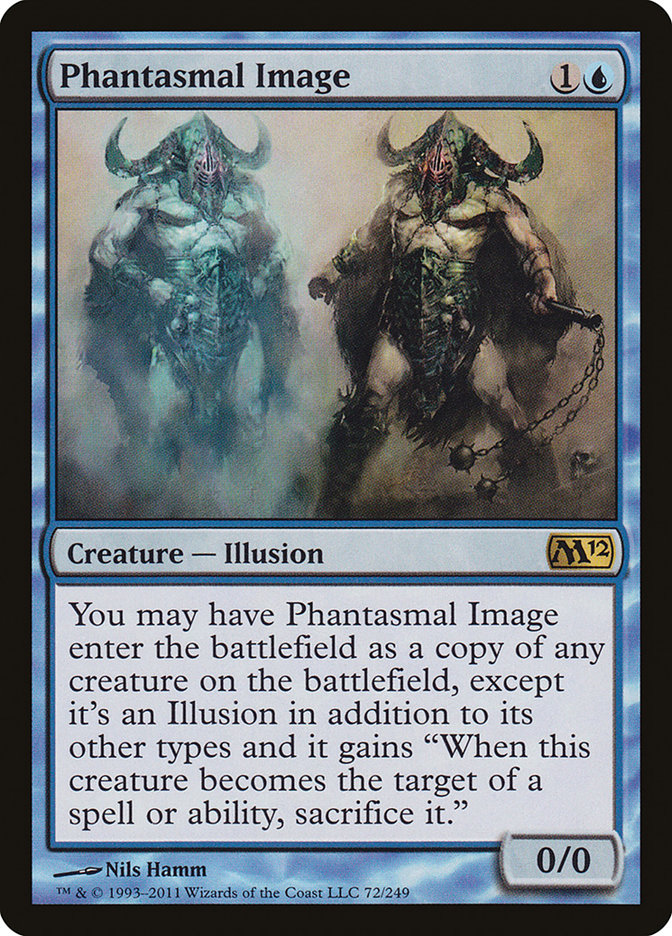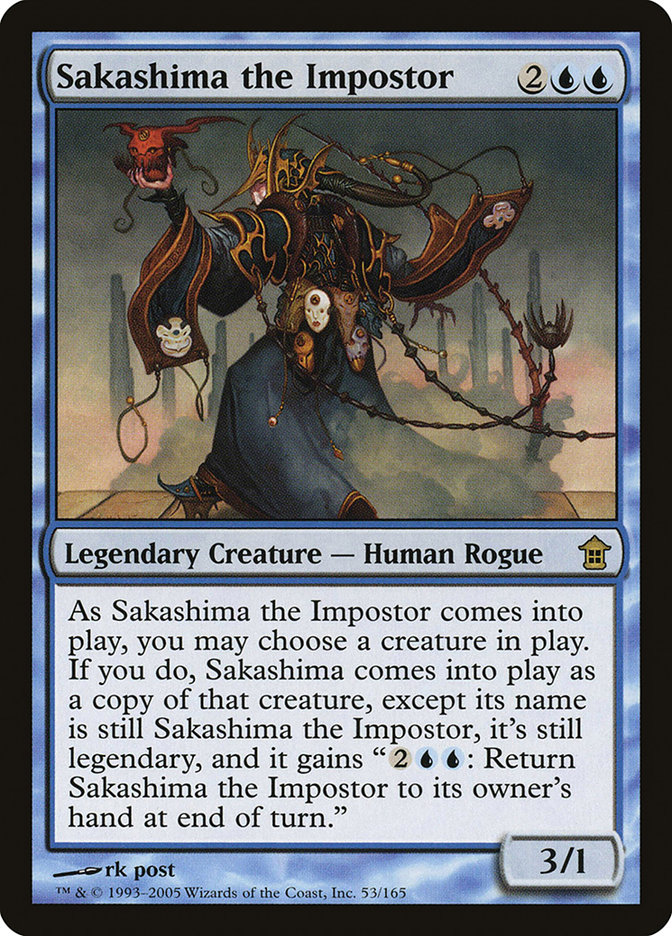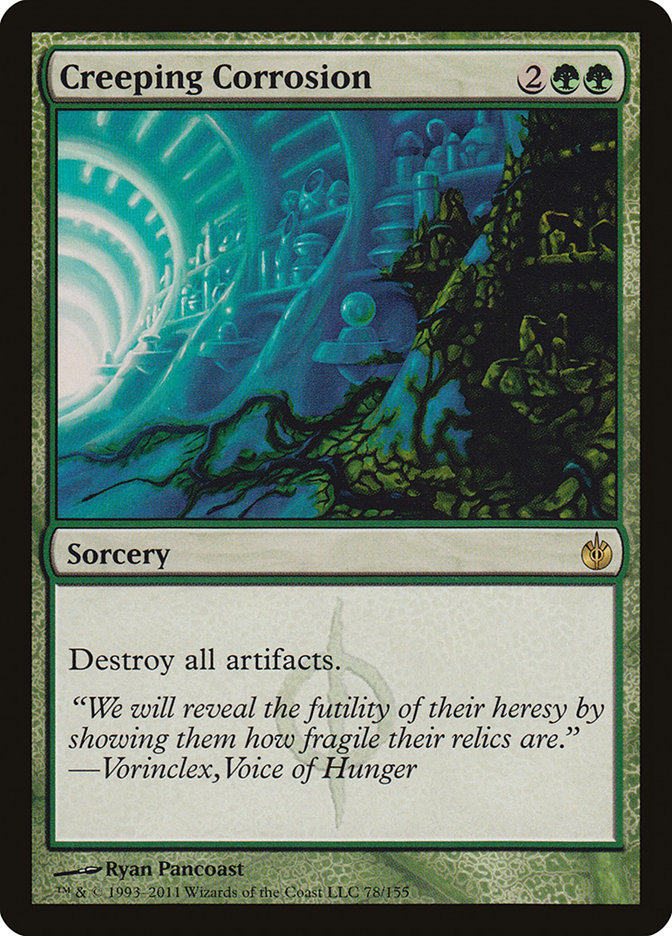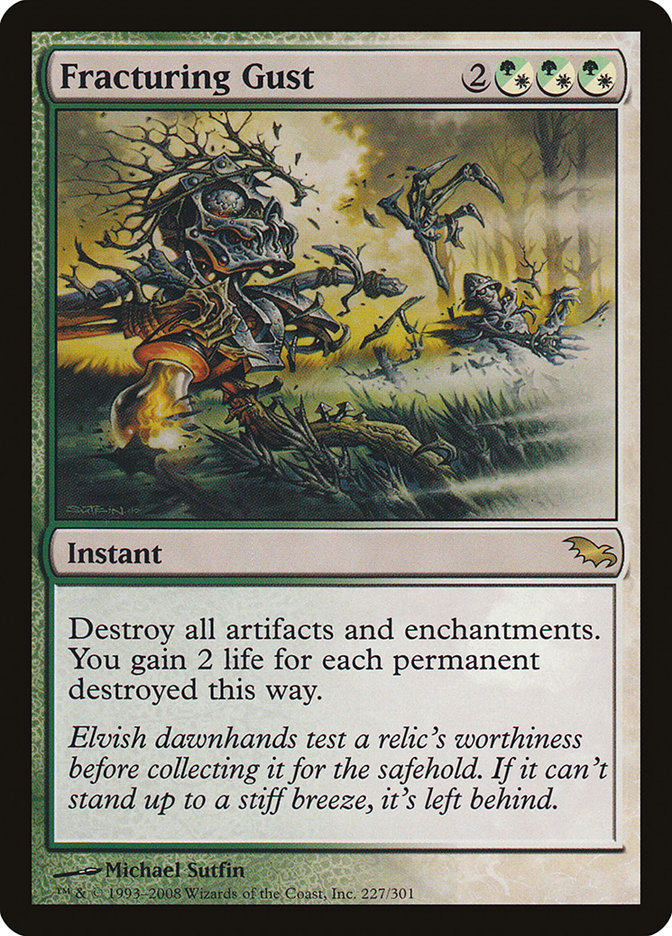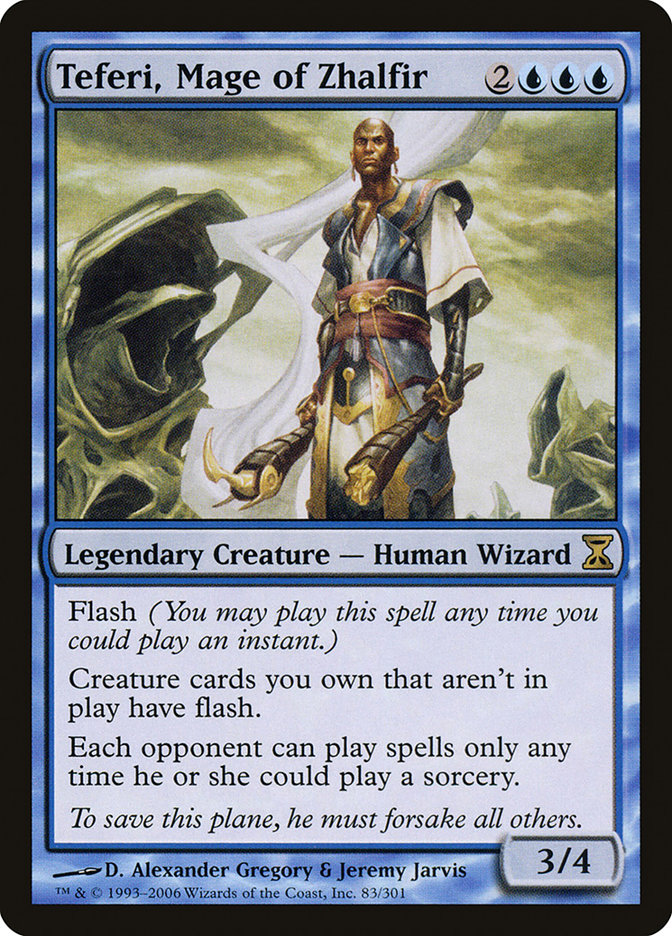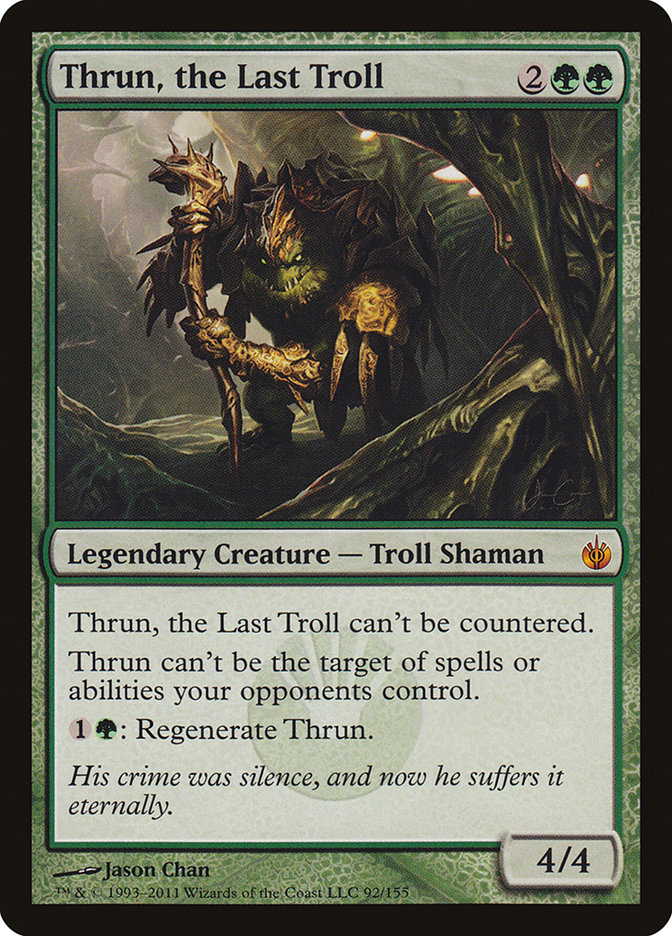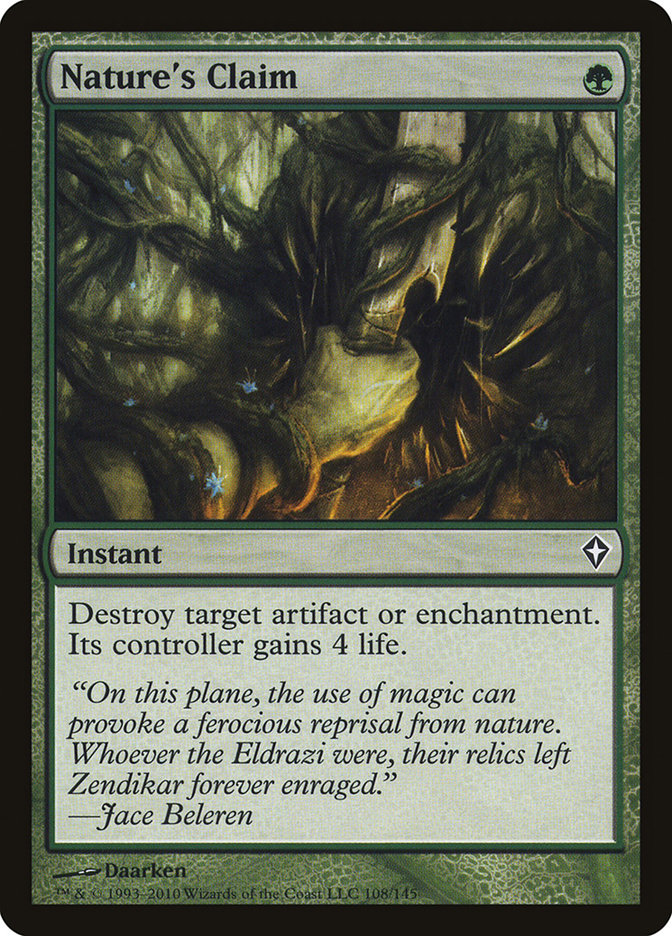A lot of people asked me for Modern help leading up to Pro Tour Born of the Gods in Valencia and Grand Prix Richmond. Last week I went into detail about one of my favorite decks in Modern, The Rock (B/G Midrange), but I ended the article mentioning the other decks that have been floating in my head. The wildest one was a deck I had only just decided to revisit: BluManji.
If you don’t remember, BluManji is a G/U Vengevine deck first designed by Larry Swasey during the domination of Caw-Blade in 2011. Larry took this wild deck full of Fauna Shaman, Frost Titan, and even Consecrated Sphinx to two Standard Open Top 8s and nearly a third Top 8! Here is one of his lists:
Creatures (27)
- 4 Birds of Paradise
- 3 Acidic Slime
- 4 Lotus Cobra
- 1 Oracle of Mul Daya
- 4 Nest Invader
- 4 Vengevine
- 4 Fauna Shaman
- 2 Frost Titan
- 1 Consecrated Sphinx
Planeswalkers (6)
Lands (25)
Spells (2)
Sideboard

Watching this list was pretty inspiring. It was such a brilliant challenge to Caw-Blade, and when you played the decks head-to-head, it just felt so overwhelming in favor of BluManji. As the format developed, I started playing the deck constantly, and up until the printing of Dismember, I had a list that regularly destroyed Caw-Blade and was basically excellent in every other matchup. Three of us played the deck one weekend in two different PTQs; all of us made Top 8, and Larry won his event with my version of his deck:
Creatures (32)
- 4 Birds of Paradise
- 3 Acidic Slime
- 4 Lotus Cobra
- 4 Nest Invader
- 4 Vengevine
- 4 Fauna Shaman
- 2 Frost Titan
- 2 Consecrated Sphinx
- 3 Spellskite
- 2 Phyrexian Metamorph
Planeswalkers (4)
Lands (24)

What was really exciting about this deck was the ability to explode into absurd plays and have access to turn 3 Jace, the Mind Sculptor without feeling like you were just a one-trick pony. In the Caw-Blade matchup, you were the better Jace, the Mind Sculptor deck, and once some of the hybrid Twin-Blade decks showed up more regularly, it felt like they couldn’t keep up with your various forms of disruption.
As Modern was getting into swing, I was looking for a new deck to approach the metagame. At one point I decided to revisit BluManji, largely because there really didn’t seem to be any particular card holding it back. One of the biggest losses for the deck was the lack of Jace, the Mind Sculptor in Modern, but in exchange it got a ton of cards for the toolbox element of the deck. My update got me one PTQ Top 8 and two Top 16s (as well as one 2-2 drop). With help from Ronny Serio and comments from Larry Swasey, I shifted the deck little touches here and there from week to week. Here is one of the versions of the list I played:
Creatures (39)
- 2 Kira, Great Glass-Spinner
- 2 Birds of Paradise
- 1 Scryb Ranger
- 1 Teferi, Mage of Zhalfir
- 1 Tarmogoyf
- 1 Venser, Shaper Savant
- 2 Vendilion Clique
- 2 Kitchen Finks
- 2 Glen Elendra Archmage
- 4 Noble Hierarch
- 1 Acidic Slime
- 4 Lotus Cobra
- 1 Oracle of Mul Daya
- 1 Lodestone Golem
- 4 Vengevine
- 4 Fauna Shaman
- 1 Obstinate Baloth
- 1 Consecrated Sphinx
- 1 Spellskite
- 1 Phyrexian Metamorph
- 1 Melira, Sylvok Outcast
- 1 Phantasmal Image
Lands (22)

The deck felt quite strong, and I took it to Grand Prix Lincoln but dropped at 3-3 after being resoundingly defeated by two other rogue decks and a pair of turn 2 wins from Pyromancer Ascension. I still felt good about the deck, but it was pretty frustrating just in that general way in Magic that I think a lot of us experience—that sense that things are out of our hands and that but for a slight turn of fate each of those losses would have been a win.
It’s a common feeling, but that kind of thinking is usually a trap. A part of why Magic can be such an addictive game is that chance in the game is easy to ignore when you’re winning and can be blamed when you are losing. But thinking that way doesn’t help you grow, and it doesn’t let you take note of where you might have been able to make different choices to affect your fate. Against one of the rogue decks I played (Mindcrank), I kept a pretty loose hand after winning game 1 mostly because I disrespected what my opponent was doing with their deck. A few Thoughtseize and Inquisition of Kozilek later, we were on to the third game. Game 3 started with me double mulliganing, and a few more discard spells took me out.
There’s no telling if I could have won that second game had I mulliganed. In retrospect, I think I can see now what I couldn’t see then—at the time I was still pretty deep in my work toward a PhD, and I just had a ton of rust on me. Magic isn’t very forgiving, and if you fall behind in knowing what’s going on, it really doesn’t care. Most likely I made a lot of bad decisions in my games, and I’m also pretty sure that I didn’t have the right silver bullets in my gun that day. Defeated, I wandered over to the Win-A-Box area and went infinite in Standard, so at least it wasn’t a total loss.
Modern continued to evolve, and I continued to work on the deck. But then it suffered what appeared to be the knockout punch:
Even though I immediately integrated Deathrite Shaman, having it in the format was a huge net loss for the deck. Burn decks, already a challenging matchup, could fight against Vengevine if they wanted, but they could also just turn off the mana that the deck needed and were better equipped to keep Deathrite Shaman on the table. Jund, a matchup that used to be slightly positive, suddenly sped up immensely, and they definitely got a lot of value out of getting rid of Vengevine, a card that had previously been one of the more important cards in that matchup.
Deathrite Shaman basically ended BluManji.
Of course, in case you haven’t heard, Deathrite Shaman is dead. The other big changes to Modern are only half relevant. Bitterblossom has yet to prove itself as a mainstream player. Wild Nacatl is the proven real deal, and between Nacatl decks and Affinity, aggression is back in the mix.
I made a preliminary list before Grand Prix Richmond, updating BluManji with all of the new cards that I thought might be relevant. I did an analysis of the Modern metagame in Valencia, but that data was certainly corrupted by the Draft portion of Pro Tour Born of the Gods. In Richmond this was the top of the field, players with 13-2 records or better (all variants lumped together):
Affinity: 12345
Pod: 12345
Twin: 1234
Scapeshift: 1
Faeries: 1
Rock: 1
U/W/R Control: 1
I’m sure that Storm, Auras, Burn, and Zoo are all still relevant as well as higher likelihood opponents, not to mention the endless list of other potential decks.
Armed with this knowledge, I revamped BluManji thusly:
Creatures (37)
- 2 Kira, Great Glass-Spinner
- 2 Birds of Paradise
- 1 Viridian Shaman
- 1 Tarmogoyf
- 1 Venser, Shaper Savant
- 2 Vendilion Clique
- 2 Kitchen Finks
- 2 Glen Elendra Archmage
- 4 Noble Hierarch
- 4 Lotus Cobra
- 3 Vengevine
- 4 Fauna Shaman
- 1 Obstinate Baloth
- 3 Spellskite
- 1 Phyrexian Metamorph
- 1 Melira, Sylvok Outcast
- 1 Scavenging Ooze
- 1 Phantasmal Image
- 1 Courser of Kruphix
Lands (23)

This was a hard 75 to make. A big part of the problem is the sheer amount of awesome tools to put in your toolbox. It’s actually very easy to get carried away. In the office last week before the GP, I showed an earlier version of this list to Brian Kowal, and he was amazed at how many awesome hate cards were in the deck. Then he paused.
"Where is Fauna Shaman?"
D’oh!
For this version a bunch of awesome cards were left on the cutting room floor. Chief among them would have to be Consecrated Sphinx. Also missing are Dryad Militant, Scryb Ranger, Prophet of Kruphix, Voidmage Prodigy, an extra Scavenging Ooze (beyond the two), extra Obstinate Baloth, and noncreatures like Mindbreak Trap and perennial favorite Zur’s Weirding (which probably should be in the sideboard).
It can be hard to look at a list like this and understand what it is doing, but it really boils down to two cards:
Barring horrible luck, both of these cards represent a must kill for an opponent that isn’t planning on killing you pretty much immediately. Lotus Cobra’s mana acceleration allows for the kind of explosive turn that can be incredibly difficult to withstand. Fauna Shaman, on the other hand, can start creating difficult to answer problems (or excellent solutions) for nearly any opponent in game 1 and generally every opponent after board.
Birthing Pod decks are very similar in many ways. One of the big distinctions between a Pod deck and a Fauna Shaman deck though is that the Pod deck is working toward creating an insurmountable combo and the Shaman deck is working toward shutting off paths to victory while simultaneously beating down. There is an argument that any deck like this should just be a Birthing Pod deck; I’m not in that camp, but I certainly understand it.
Packages
There are a bunch of packages in the deck that have powerful effects on the game. I’m going to briefly discuss them.
Crazy Mana
While not quite Mythic mana, it’s pretty close. If there weren’t so many powerful cards to tutor for, I’d probably work in another Birds of Paradise to make the deck’s mana parallel to a cross between Pod mana and Mythic mana.
Anti-Aggro
For a short window, I actually removed Kitchen Finks and Obstinate Baloth in favor of several Courser of Kruphix, but in practice I discovered that Affinity hits so hard that you need to be a bit more dedicated in your defense against aggression.
Anti-Spells
Stopping your opponent from doing anything devastating, these blue cards are all intended to make it harder for opponents who rely on instants and sorceries. While Venser, Shaper Savant and Vendilion Clique can affect anything, their primary mission is to knock the opponent slightly off their game while the rest of the deck does its work.
Hate
Each of these cards can have a devastating impact on the correct opponent all by itself.
Rapid Aggro Switch
Fauna Shaman can be great about setting up a big Vengevine turn, but rather than needing to spend, say, six mana in a turn to go fetch a second Vengevine (after pitching the first) and then casting the Vengevine and a one-drop, you can discount this by one or two mana by fetching a Clone effect instead. Then when you cast the Phantasmal Image or Phyrexian Metamorph as your second creature of the turn, the Vengevine trigger occurs, and by the time your Clone hits play it has a Vengevine to copy. Enjoy an immediate plus eight hasty power to the board, more if you’ve discarded other Vengevine.
Persistent
Copying a persist creature is a hoot—if you want, you can have it come back as any other creature in play!
Persistence
Pod players already know this: Melira, Sylvok Outcast won’t let a persist creature back with a -1/-1 counter on it.
Kira Is . . . Hard To Kill
Kira, Great Glass-Spinner is great at stopping anything short of an Abrupt Decay. If someone wants to get rid of Kira but you have Spellskite out, they are in for a rough time. The first removal spell will get countered by Kira, and the second one can be redirected to Spellskite, which triggers the Kira and counters it. The third removal spell can be redirected to Spellskite, and then it will take the fourth removal spell to finish the Kira. Of course, this will all have to happen in a single turn and assumes that there isn’t a second Spellskite in play. A minor variation on this also makes you very resilient to many of the spells in Burn.
Sideboarding
Sideboarding in a toolbox deck is always a challenge, and BluManji is no exception. There are good reasons for each of the specific fifteen cards I’ve chosen. Here is a brief breakdown:
1 Vengevine
It was incredibly hard to cut the Vengevine to the board, but really this card is at its best in grindy matchups like Jund and B/G or against pure control decks like the one Shaheen Soorani played to a top finish in Richmond. It’s also reasonably fair against combo decks that aren’t creature based. All that said, I came to the conclusion that I just needed to shift it to the board.
1 Glen Elendra Archmage
Another augmentation of the maindeck, the extra Glen Elendra Archmage is for times when your opponent is bringing a lot of spells to the table.
3 Tarmogoyf
Here we have the best anti-beatdown card you can have. This card is also solid to bring in when you are running out of time in the match.
1 Sakashima the Impostor
Another Clone, this one is for the matchups that grind out and when you expect that the potential reusing of the comes into play abilities will be relevant.
2 Creeping Corrosion, 1 Fracturing Gust
Just for Affinity, plain and simple. It may well be that the single Fracturing Gust should just be a Creeping Corrosion, but the ability to hit Nexus lands is relevant.
1 Teferi, Mage of Zhalfir
Aside from being incredible against countermagic, it is also effective at hindering Splinter Twin, Living End, and other combo effects. A player can still do the Twin combo with Teferi out, but it becomes much more unwieldy.
1 Acidic Slime
Useful against various utility lands and just generally good in slow grinds. Occasionally you’ll play against a strange deck where you’ll need Acidic Slime for the enchantment-killing ability.
1 Scavenging Ooze
Against aggressive decks, graveyard decks, and Tarmogoyf, Scavenging Ooze is pretty great. That said, I prefer having an additional tutor target in the maindeck than a redundant Ooze, so even though the Ooze often gets boarded in, one Ooze is in the board to increase the power of game 1 Fauna Shaman
1 Thrun, the Last Troll
Thrun, the Last Troll is basically playing the role that Consecrated Sphinx did in the deck—being a huge problem for control decks and midrange decks alike. Consecrated Sphinx in many ways is a bigger knockout punch, but Thrun can simply be harder to answer, and you don’t necessarily need to knock them out if you just kick them on the back of the knees.
1 Roil Elemental
Some matchups just involve creatures staring at each other. In those Roil Elemental is the biggest bomb you can imagine, totally devastating games and often easily protected by Kira, Great Glass-Spinner and Spellskite.
1 Nature’s Claim
This single Nature’s Claim is another card to help fight Affinity but of course is a nice answer to plenty of other cards, be it Blood Moon, Birthing Pod, Splinter Twin, or something else. I would love to play a second, but so much is already cut as it is that I don’t think it would be wise to cut more.
Final Words
I’ve been playing this deck a lot online. It isn’t just fun; it also feels impressive every time I play it. I think one of my favorite things about the deck is being able to leverage the power of explosive mana into a favorable board position and then wrapping up the game with hate cards. I also appreciate that the deck isn’t fully reliant on Fauna Shaman the way it often feels like Pod decks are reliant on Birthing Pod.
This deck can be shaped to beat any individual deck simply by virtue of shifting the hateful silver bullets around. That being said, I don’t think it’s possible to hone the deck to beat all of the decks in Modern at the same time—there are simply too many. But given the way the metagame has heavily shifted to so few decks, it seems to me that now is the time to ride BluManji to victory.


